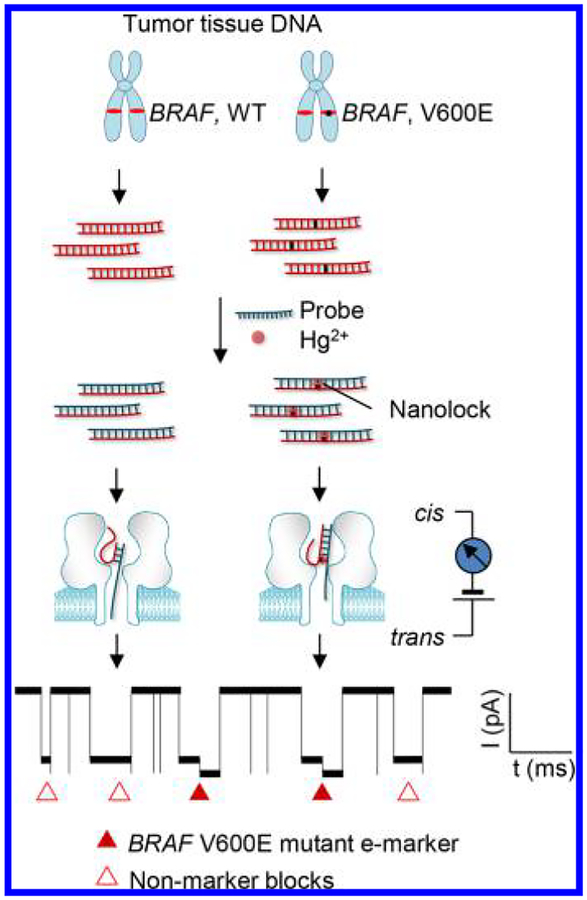Figure 1.
Nanolock-nanopore detection of the BRAF V600E mutation in tumor DNAs. The target fragments including the mutation site obtained from the patient tumor DNA are hybridized with the probe. The mutant allele/probe duplex can form a mutation sequence-specific nanolock with Hg2+. The stepwise unzipping of the duplex carrying a nanolock can produce a unique e-marker signal (solid triangles) that is distinguished from nonmarker blocks (empty triangles) produced by duplexes without nanolock formation. The e-marker can be used to identify the presence of the specific mutation at an extremely high sensitivity and accurately quantify the mutation percentage in a given sample.

